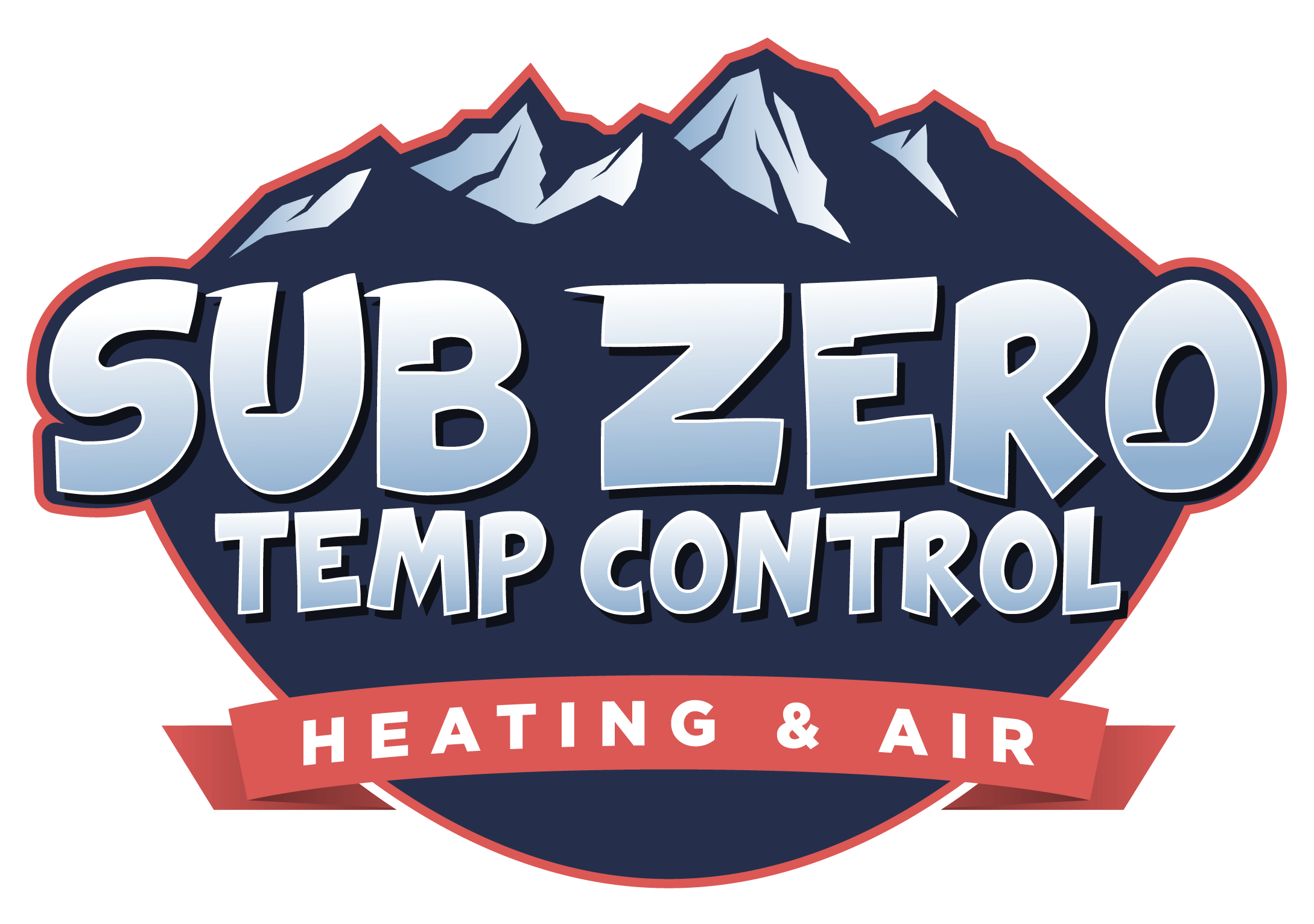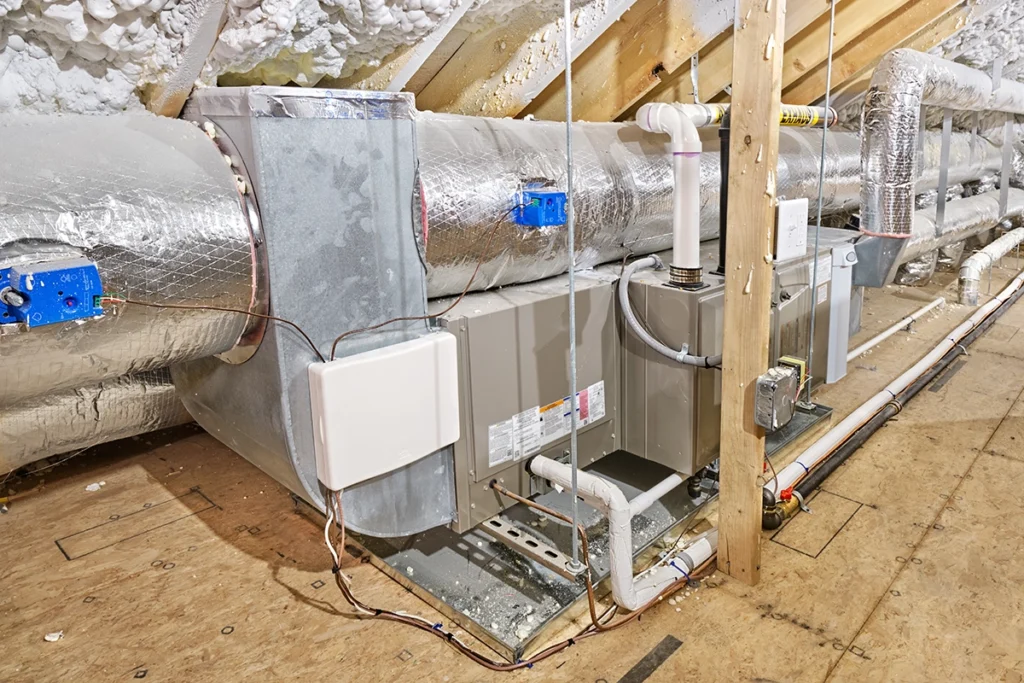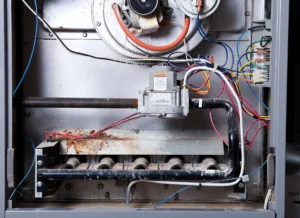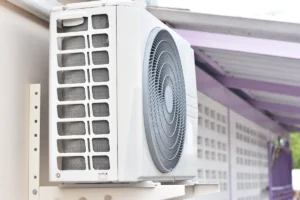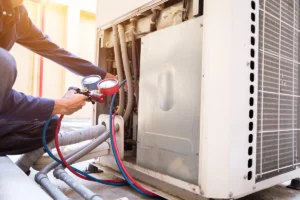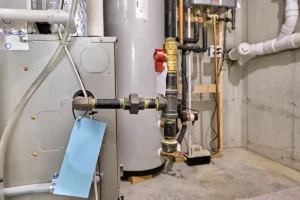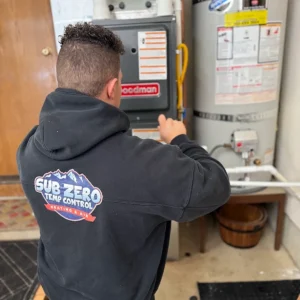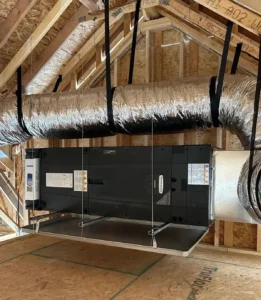If you’ve ever had a technician mention a furnace heat exchanger, you might’ve wondered what that actually means. At Sub Zero Temp Control, we talk about it a lot—because it’s one of the most important components inside your heating system. Without it, your furnace couldn’t deliver safe, warm air throughout your home. And when it starts to fail, you’ll definitely feel (and possibly smell) the effects.
Let’s break down what a furnace heat exchanger does, how it works, and why it sometimes fails—plus what you can do to prevent expensive repairs or safety hazards.
What a Furnace Heat Exchanger Actually Does
Think of the furnace heat exchanger as the heart of your heating system. Its main job is to transfer heat from the burning gas to the air that circulates through your home. It keeps toxic combustion gases, like carbon monoxide, safely sealed off from your breathing air while delivering clean, warm airflow through your vents.
Here’s how it works in simple terms: your burners ignite, the metal walls of the exchanger heat up, and then your blower fan pushes air across those hot surfaces. That air picks up heat without touching any combustion gases, keeping your family warm and safe.
(Quick note from experience—when homeowners skip annual maintenance, the exchanger tends to suffer first. Dust, corrosion, and poor airflow take a bigger toll than most people realize.)
Why the Furnace Heat Exchanger Fails
Even the best-built furnace heat exchanger has a lifespan. Over time, heat expansion and contraction cause small cracks or splits in the metal. Once those cracks form, combustion gases can leak into your home’s airflow, which is not something to take lightly.
A few common reasons for failure include:
Restricted airflow from dirty filters or blocked vents
Overheating caused by blower or thermostat issues
Corrosion from moisture or condensation inside the furnace
Old age, usually around 15–20 years of heavy use
Once a crack appears, the only safe fix is replacing the exchanger—or in many cases, replacing the entire furnace. The U.S. Department of Energy says that older furnaces that operate at 56%–70% efficiency can be replaced by modern units that approach 90%+ efficiency — which can significantly reduce fuel bills.
Signs Your Furnace Heat Exchanger Might Be in Trouble
You don’t need special tools to suspect a problem. Here are a few warning signs our technicians at Sub Zero Temp Control look for:
Unusual smells—especially a metallic or burning odor
A yellow or flickering flame instead of steady blue
Unexplained soot buildup near furnace openings
Frequent tripping of the carbon monoxide detector
Rattling or banging noises after the burners shut off
If you notice any of these, it’s time to shut the system down and call for professional inspection. It’s always better to be cautious when the furnace heat exchanger is involved.
How Technicians Inspect the Furnace Heat Exchanger 
Step 1: Safety and Visual Check
First, we power down the unit and remove access panels. Then we use inspection mirrors, cameras, and sometimes borescopes to check for visible cracks or rust.
Step 2: Combustion and CO Testing
We measure carbon monoxide levels around the exchanger and in the exhaust vent. Any abnormal readings can point to hidden cracks.
Step 3: Airflow and Temperature Testing
Finally, we test the airflow and temperature rise across the exchanger. If the numbers don’t add up, that’s often a clue the exchanger isn’t transferring heat efficiently. Of course, not every heating issue points to a cracked exchanger—some come from smaller furnace problems like a faulty pressure switch or airflow restriction.
We’ve had homeowners apologize for “calling us out for nothing,” only to discover a hairline crack we caught early. Catching it before it leaks gas is always a win.
Preventing Furnace Heat Exchanger Problems
The good news? Most exchanger failures are preventable. Regular maintenance keeps the system balanced and clean. To see what a full tune-up includes and how it helps protect components like the heat exchanger, explore our HVAC maintenance expert guide.
Replace your filters monthly during peak season, and schedule a full tune-up before winter hits.
During maintenance, our team checks gas pressure, cleans burners, and ensures all components—including the furnace heat exchanger—are working safely.
According to the Centers for Disease Control and Prevention (CDC), fuel-burning appliances like furnaces can produce dangerous carbon monoxide if something goes wrong—such as a cracked heat exchanger.
When Replacement Makes More Sense
If your furnace heat exchanger is cracked, outdated, or showing signs of severe corrosion, replacement may be the best move. In many cases, replacing the entire furnace is more cost-effective, especially if your unit is over 15 years old. To better understand when it’s time to replace your furnace and how age affects performance, check out our detailed guide on furnace lifespan.
Modern systems run more efficiently, operate more quietly, and provide better safety features. At Sub Zero Temp Control, we help homeowners compare repair vs. replacement costs honestly—so you can make the right call for your comfort and budget.
Final Thoughts
Your furnace heat exchanger is one of those components that works silently in the background until something goes wrong. A cracked or damaged exchanger isn’t just a comfort issue—it’s a safety one. Regular maintenance, timely repairs, and professional inspections can keep your system running efficiently for years to come.
If you suspect an issue or just want peace of mind, reach out to Sub Zero Temp Control. We proudly serve homeowners in Vancouver, WA and nearby areas, keeping families safe and comfortable through every season.
Contact us today to schedule your furnace inspection or maintenance appointment.
FAQs
We get a lot of questions from homeowners about furnace heat exchangers—especially when it comes to safety, lifespan, and repair options. Here are a few of the most common ones we hear at Sub Zero Temp Control.
Most furnace heat exchangers last 15 to 20 years, depending on use and maintenance. Regular tune-ups can extend their life.
Unfortunately, no. Once the metal cracks, it can’t be safely welded or patched. Replacement is the only reliable solution.
Common signs include soot, metallic odors, and carbon monoxide alerts. Always call a professional for inspection before running the system again.What Is the Average Lifespan of a Furnace Heat Exchanger?
Can I Repair a Cracked Furnace Heat Exchanger?
How Do I Know if My Furnace Heat Exchanger Is Cracked?
